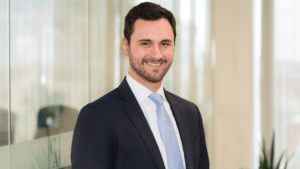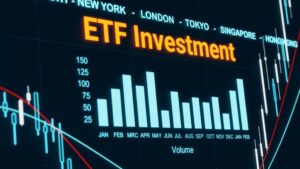Advisers can no longer ignore the macro
With volatility and inflation on the rise, things aren’t looking too good for the near future; that’s the broad view of the Global Macro team at JP Morgan. Speaking at the Inside Network’s Alternatives Symposium, held on February 23, Josh Berelowitz, portfolio manager in the macro strategies team, confirmed our worst fears, saying “traditional beta investing is going to face a lot of challenges on a forward-looking basis in terms of risk, return, correlation and diversification.”
The issue he was describing can be summarised as being the reversal of the 40-year bond yield tailwind that has supported nearly every asset class in the world. During a wide-ranging presentation, Berelowitz highlighted the fact that the correlation between bond and equity markets, despite being negative on average, has tended to be highly volatile in recent years. Most concerning, though, was the fact that bond allocations are offering less of a shield against equity market drawdowns; and more recently, have fallen alongside equities from time to time.
But he didn’t travel all the way from London to tell financial advisers about how difficult life might be going forward. “I’m not here to depress the crowd,” he said; rather, he aimed to put forward solutions and options available to both hedge against major risks, but also aid in the pursuit of returns.
While most fund managers make it clear they cannot predict the future of the ‘macro’ environment, JP Morgan believes that understanding the macro is likely to be more important than ever in the years ahead. Particularly so, when the forecast return for equities is just 3.8 per cent a year over the next ten years.
One of the least-appreciated influences on asset markets at the current time, he says, is the differing role that economic growth and policy support have played in market returns. In 2022, it is becoming clear that both inputs are set to slow, with economic growth in most developed and emerging markets slowing, and both monetary and fiscal policy being reduced. The result, Berelowitz said, is that “stocks look modestly expensive and fixed-income has seen a shift in fiscal policy; it has moved expansionary and central banks have shifted with the advent of average inflation targeting. Looking forward there is a step down in returns, albeit with higher risks.”
The solution is threefold, but with two key areas of focus. The first is to follow the macroeconomic cycle closer than anyone else. Clearly this is difficult for an individual fund manager to achieve, but JP Morgan’s sheer scale and thousands of employees and inputs make this possible. Its unique edge, according to Berelowitz, is a focus on understanding the shorter cycles that occur in markets, rather than the elongating business cycle that the global economy now experiences.
In this, he highlighted the GFC to COVID-19 pandemic as a single business cycle, but with several sub-cycles including the European debt crisis, China slowdown, trade war and eventually, the pandemic. Understanding where each major economy is within the ‘recovery, expansion, slowdown or contraction’ lifecycle, knowing which asset classes perform best and ultimately being able to implement these ideas.
The second and likely most relevant issue in the current environment is the hedging of risks, for which JP Morgan has a three-step process. Berelowitz highlighted the issue with relying on the historically strong hedge of government bonds, and suggested a more dynamic approach to hedging major macro risks, which ultimately drive markets.
This is a three-stage framework, which naturally involves identifying the risk, but more importantly assessing how long that risk will remain. Next is determining precisely how one can protect the portfolio against said risk, and finally, regularly assessing how that risk is playing-out. Using the example of COVID-19, Berelowitz says it was initially assessed as a Q1, China-centric risk, hedged initially by using the safe-haven Japanese Yen, and a weaker Australian dollar to protect the portfolio.
By February, when cases were identified in Europe, it evolved into a global risk, with the Global Macro team utilising put options on US large-cap equities: we all know how that played-out. Ultimately, the message was that advisers will need to think differently about how we invest in the future, to understand the macro, and that risk management will play a more important role than ever.










